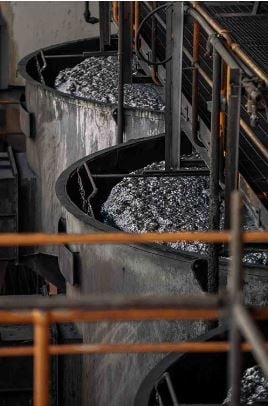The future mine adopts emerging mineral processing technologies that have a significant impact on energy and water consumption, reducing waste volumes, and improving environmental performance, while improving recoveries.
Mineral processing technologies
There are several current and emerging separation, sorting and recovery technologies at various stages of development which will support a lower impact mineral processing plant design.
These are focused on:
- Footprint reduction through flotation technology selection
- Pre-concentration of ores to reduce power consumption and tailings volumes
- Reduced power consumption through more efficient equipment, early waste rejection within the processing plant (less grinding, coarser tailings)
- Improved recovery at coarser grind sizes
- Providing advanced circuit control and predictive maintenance through sensors and artificial intelligence
- Reduction in water use
- Recovery of iron ore fines through dense media processing
- Reduced toxicity recovery solutions
- Reduced design footprints for lower embedded carbon emissions
Sedgman has a history of early technology adoption in our minerals processing designs – talk to us about the minerals processing technologies that are right for your ore. The emerging technology landscape includes,
Current focus:
- Mine-to-mill
- HPGRs, stirred milling
- Coarse particle flotation
- Iron ore dense medium recovery
- Low-footprint and emissions reduced designs
- Lower toxicity recovery solutions
Short-term focus:
- Flexible circuit (HPGR, stirred mill)
- VRM (vertical roller mill)
Long-term focus:
- Dry classification within HPGR/ VRM circuits
- Hybrid separation (hydrocyclone and screen combination)
- Advanced mill circuit control (mill speed, load, pump speed, water addition, and hydrocyclone parameters)
- Pre-concentration through high voltage pulse/microwave pre-treatment
- Novel leaching (galvanox)
Ore pre-concentration
Ore sorting can support improved project economics where the run of mine ore contains dilution, or where there is cost benefit of rejecting low grade ore prior to processing. Ore preconcentration can be investigated for both greenfield and brownfield projects to maximise asset value and NPV.
Benefits can include:
- Smaller scale entry to production
- Deferred scale increase
- Extend life of mine (LOM)
- Improved competitive position
- Reduced energy, carbon dioxide and water consumption
- Reduced size of waste rock dumps, reduced acid generating potential of waste rock dumps & associated long-term costs
- Reduced tailings volumes and water use
Our expert team has extensive experience in simulating the benefit to NPV of ore preconcentration options.

Sustainable designs
Our design teams are experts at introducing emerging technologies into our minerals processing plant designs and innovating to reduce embodied carbon and the environmental impact of our designs.
From concept design through to feasibility studies and execution, we focus on:
- Undertaking value engineering to reduce plant footprints, steel and concrete quantities and associated carbon emissions
- Including lower emission materials in designs
- Undertaking life cycle analysis modeling on designs to support review of options and identification of hotspots for focused reduction efforts
- Implementing solutions that reject waste at a higher top size, with significant impact on water usage, and volume of fine tailings. This can be implemented, depending on specific ore characteristic, through bulk sorting and coarse flotation
- Test work to evaluate applicability of low-toxicity gold recovery solutions for cyanide-free gold processing
- Evaluating alternate processing options to reduce grinding and tailings creation. Some ores are amenable to leaching and hydrometallurgy solutions
For more detailed insights into footprint reduction potential, watch this presentation at the Mines and METs online conference. It includes case studies with significant power, cost and footprint reduction outcomes.
